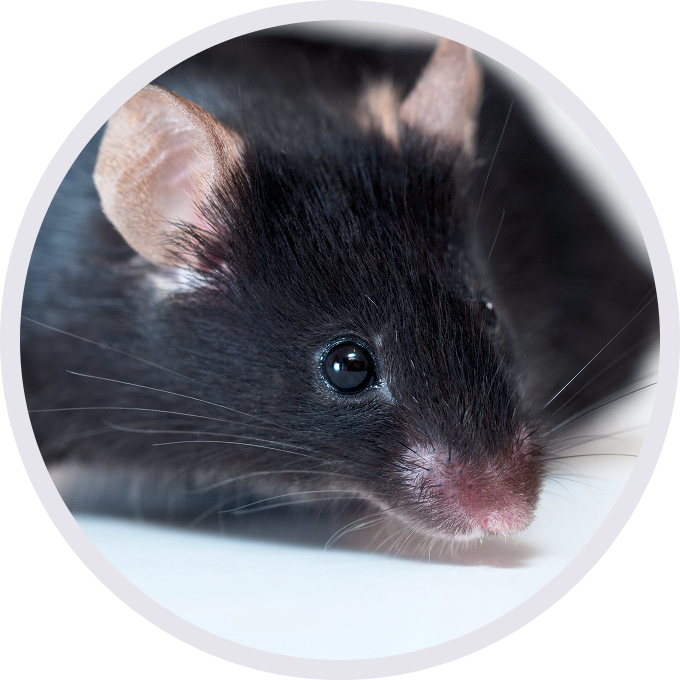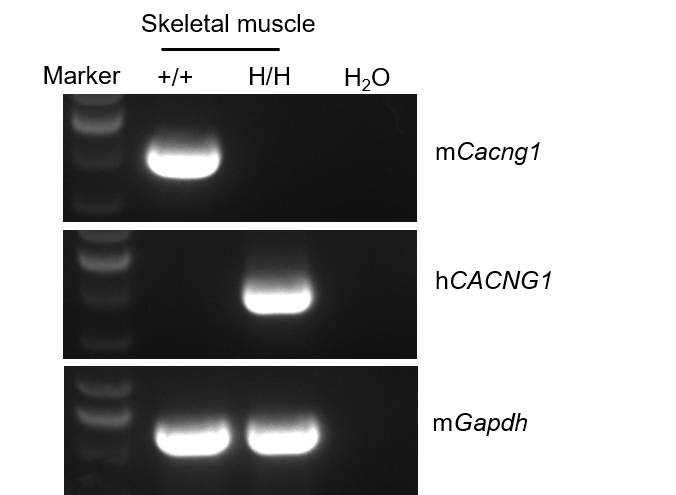
C57BL/6JNifdc-Cacng1tm1(CACNG1)Bcgen/Bcgen • 113868
Gene targeting strategy for B-hCACNG1 mice. The exons 1-4 of mouse Cacng1 gene that encode extracellular domain and transmembrane domain are replaced by human counterparts in B-hCACNG1 mice. The sequences in exon 1 and exon 4 encoding the remaining N-terminal and C-terminal cytoplasmic portion are retained. The promoter, 5’UTR and 3’UTR region of the mouse gene are retained. The human CACNG1 expression is driven by endogenous mouse Cacng1 promoter, while mouse Cacng1 gene transcription and translation will be disrupted.

Strain specific analysis of CACNG1 mRNA expression in wild-type C57BL/6JNifdc mice and B-hCACNG1 mice by RT-PCR. Skeletal muscle RNA were isolated from wild-type C57BL/6JNifdc mice (+/+) and homozygous B-hCACNG1 mice (H/H), then cDNA libraries were synthesized by reverse transcription, followed by PCR with mouse or human CACNG1 primers. Mouse Cacng1 mRNA was only detectable in wild-type mice. Human CACNG1 mRNA was exclusively detectable in homozygous B-hCACNG1 mice but not in wild-type mice, and the sequences were confirmed via Sanger Sequencing.